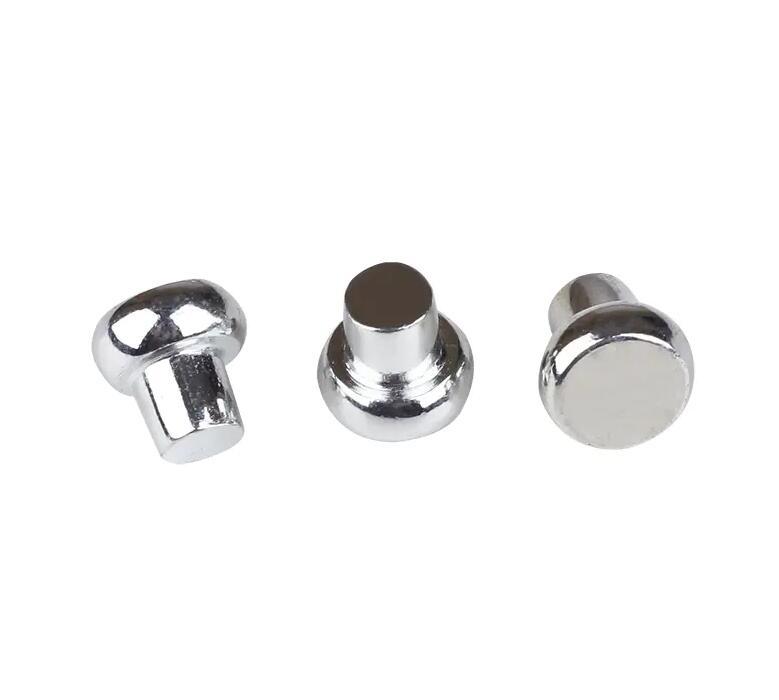Exploring the Significance of Clutch Rivets in Automotive Systems

Clutch rivets play a vital role in the functionality and reliability of clutch assemblies. These small but powerful fasteners are responsible for creating a secure and robust connection between the various components of a clutch system.
(1)Creating a Mechanical Lock:
One of the primary functions of clutch rivets is to create a mechanical lock between the clutch components. During installation, the rivets are inserted through pre-drilled holes in the clutch disc and pressure plate. As the rivets are deformed or "set," they expand, forming a tight connection that securely holds the components together.
(2)Generating Clamping Force:
Clutch rivets generate clamping force by creating a wedging effect. As the rivets are set, the material surrounding the holes in the clutch disc and pressure plate deforms and compresses against the rivet body. This deformation creates friction and clamping force, ensuring a strong bond between the components.
(3)Resisting Vibrations and Forces:
Clutch assemblies are subjected to high rotational speeds, heavy loads, and vibrations. Clutch rivets are designed to withstand these forces and prevent any relative movement between the components. Their secure connection ensures that the clutch can transmit power efficiently and maintain consistent engagement and disengagement during operation.
(4)Proper Size and Design:
To ensure a secure and reliable connection, clutch rivets must be appropriately sized and designed for the specific clutch assembly. The diameter, length, and head type of the rivets are carefully chosen to match the dimensions and requirements of the clutch components. This precision ensures optimal contact, load distribution, and torque transmission across the assembly.
(5)Material Strength and Durability:
Clutch rivets are manufactured from high-strength materials to withstand the demanding conditions of clutch applications. The chosen material should have excellent tensile strength, shear strength, and fatigue resistance. This ensures that the rivets can handle the forces and cyclic loading experienced during clutch engagement and disengagement without compromising their integrity.
(6)Heat and Wear Resistance:
Clutch assemblies generate heat due to friction, and the components undergo wear over time. Clutch rivets are designed to resist the effects of heat and wear, maintaining their strength and integrity throughout the lifespan of the clutch. Special coatings or surface treatments may be applied to enhance their heat resistance and reduce wear.
(7)Quality Manufacturing and Installation:
The reliability of clutch rivets depends not only on their design but also on the quality of their manufacturing and installation. Strict quality control measures during production ensure consistent dimensions, material properties, and mechanical characteristics. Proper installation techniques, such as controlled rivet setting processes, help maintain the integrity of the rivets and ensure a secure connection.
- Art
- Causes
- Crafts
- Dance
- Drinks
- Film
- Fitness
- Food
- Games
- Gardening
- Health
- Home
- Literature
- Music
- Networking
- Other
- Party
- Religion
- Shopping
- Sports
- Theater
- Wellness


